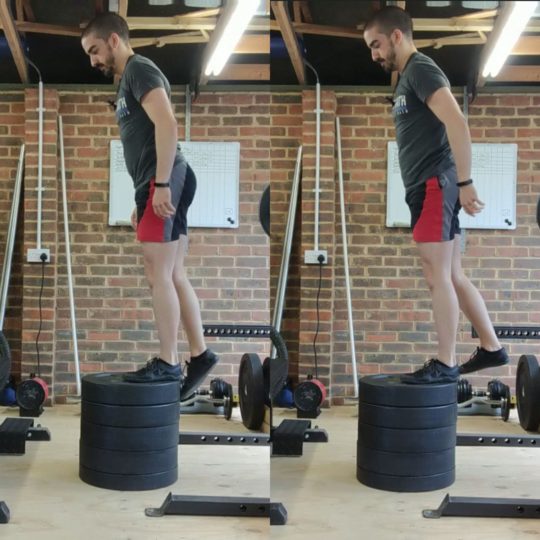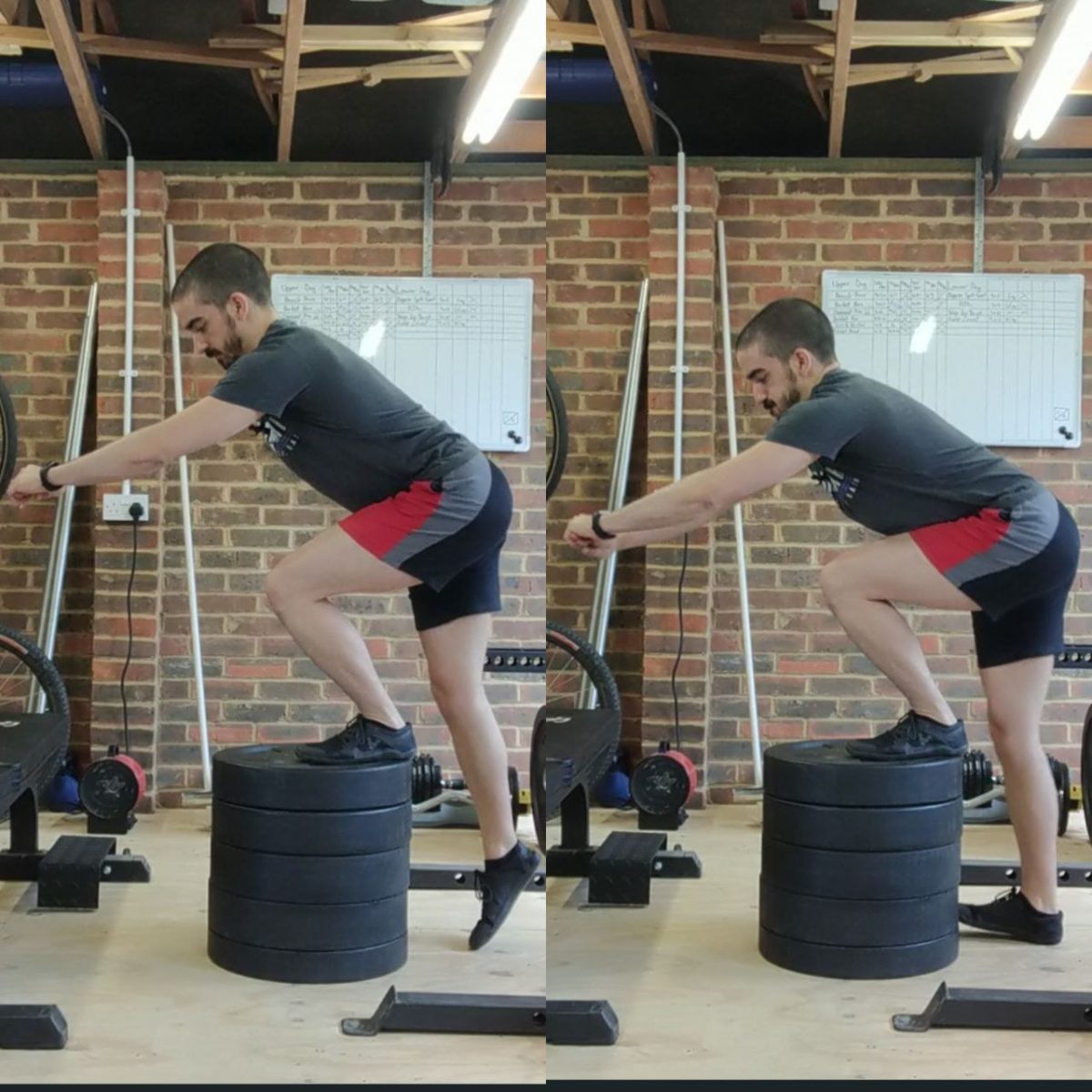Pre-Requisites
Being able to walk up the stairs without a hand rail, really, if you are starting with the shallowest possible depth.
But being comfortable with basic body weight squats, split squats or even Bulgarian split squats will make these much easier to learn at a ‘standard’ depth.
Start Position:
The start position is on an elevated surface, from a stair all the way up to a tall box. One leg will either be trailing off the edge of the surface to the side of you, or behind you depending on personal preference or what is accessible to you. The trailing/hanging leg will either have your toes pointed, or ankle flexed. (This will help you control your depth, which will be explained below)

Movement:
Start to lower yourself down by squatting with the standing leg, descending slowly and with control until either your pointed toe or heel gently touches the floor, and then stand up. If you want to reduce the depth of the movement at any given height, use a pointed toe, if you want to increase the depth, use the heel.
Leg back (Toes and Heel)
Leg to the Side (Toes):
End Position:
The key to the step down, and its differentiation from its more common cousin the step up, is that tension is mantained on the working leg at the bottom of the movement. You do not put your weight down on the floor and relax the working leg. The end of the movement is signalled by a light tap of the heel or the pointed toe on the floor, at which point you can either stand back up, or pause before doing so, for added challenge.

Common Errors:
The biggest error you could make in this movement is in turning it into a step-up. Step-ups are not as effective in loading the working leg because at the bottom you can ‘hop’ a bit with the back leg to help yourself get up, and additionally there is no tension on the working leg at the bottom of the movement. Ensure you don’t do this by keeping the weight on your working leg for the whole movement and coming back up as soon as you *gently* tap the floor. You may find that you cannot use a surface as high as you might be able to do a step up onto, this is absolutely fine. It’s better to do less depth with control than cheat the extra amount with the back leg.
Progressions:
You can either progress with added weight, or by going deeper by using a higher surface.
Alternately, if you simply want a different one legged squat movement after you’ve ‘mastered’ these, you could try out pistol squats or shrimp squats!
Join my Discord Server!
If you’ve read this far and still have questions, I’d highly recommend joining my Discord Server! There are plenty of knowledgeable folks there (including me sometimes!) that can answer your questions.
Support the Creator!
If you like my content a lot and want to say thanks to the person that made it (me!), you can send me a one-off or monthly tip on Ko-fi here! Also, I have a premium exercise library hosted on this site with currently 325 exercises in it that you can subscribe to for only £5 per month. If you do decide to sign up, it’d be even better for you than donating anyway, because you get some nice premium content as well!
(ON THE PRESENCE OF ADS ON THE SITE:) I make the majority of my content for free because I simply want to help people as much as I can, and want to make fitness as accessible and easy to understand as possible, but running this site has some costs associated with it and like everyone in this world I’ve got bills to pay! I have had manual donation buttons and optional paid subscriptions on my site for years so I could avoid hosting ads for as long as possible, but the number of supporters to the site has not grown proportionally with increased traffic (and associated running costs from improvements to the site) over time.
Ultimately, that has informed the decision to host ads on the site. In an ideal world, if I were able to get enough consistent supporters to the site, then I could go back to making the site fully ad-free. At the same time I recognise that is not realistic, as a lot of people who appreciate my content the most do so because it is completely free, and would ultimately rather choose a few ads in my articles than having to pay for access.

